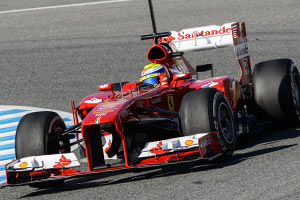
Could it be a hole ala Redbull what the yellow arrow is pointing? I thought at first it might be the holder shadow
but I realized is too big if I compare with F150 holder (marked by blue arrow)
The team recognized on pre season interviews that they were thinking on Redbull channel airflow channel.
Could it be that instead of having the hole on the back it is at front of sidepods? To use the airflow to cool batteries and
direct it to the diffuser.
No an expert but just bringing to discussion if it would be a possibility. You can always call me mad. At least I don't see small holes on the blackberry logo on Mercedes nose









